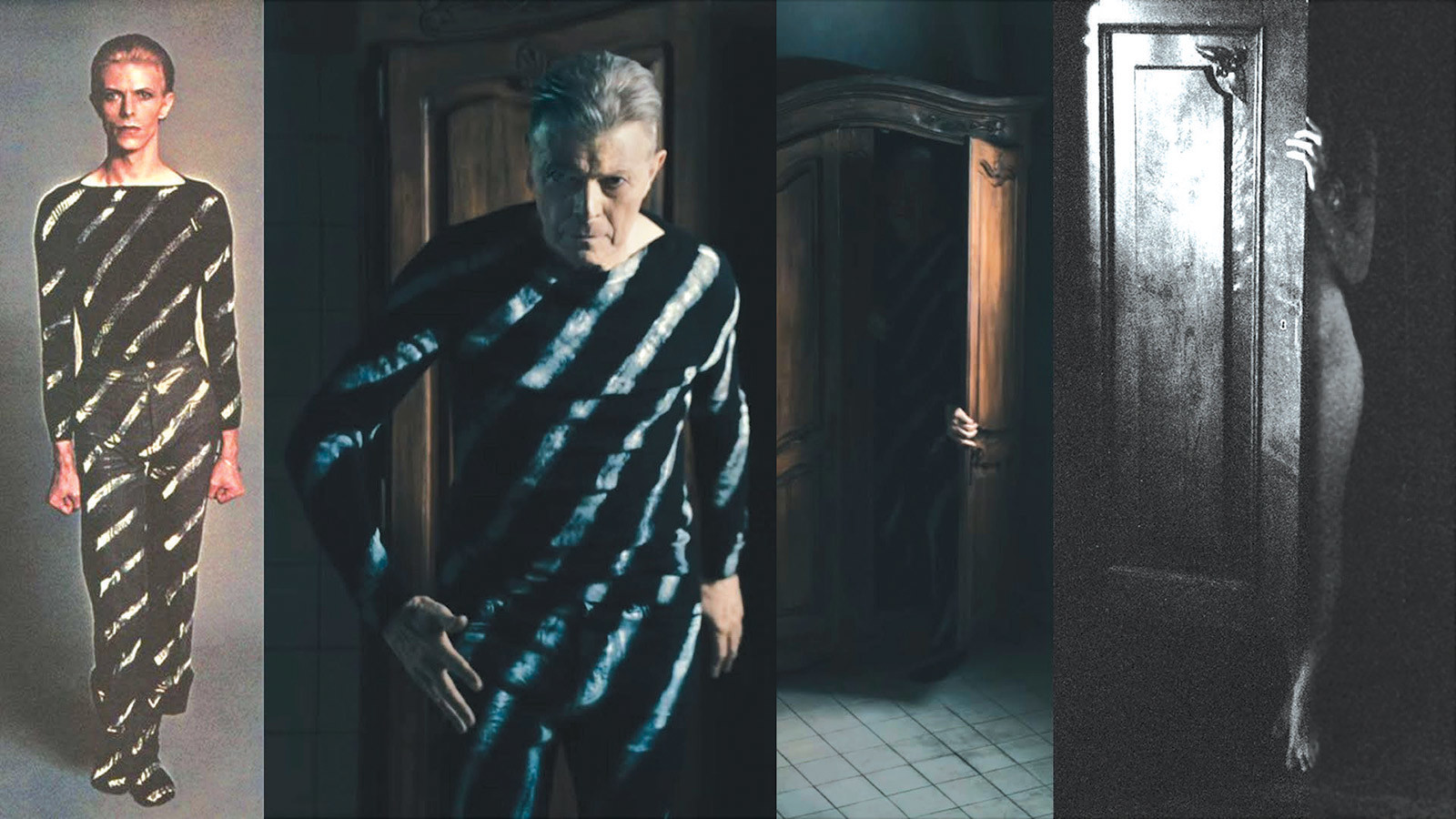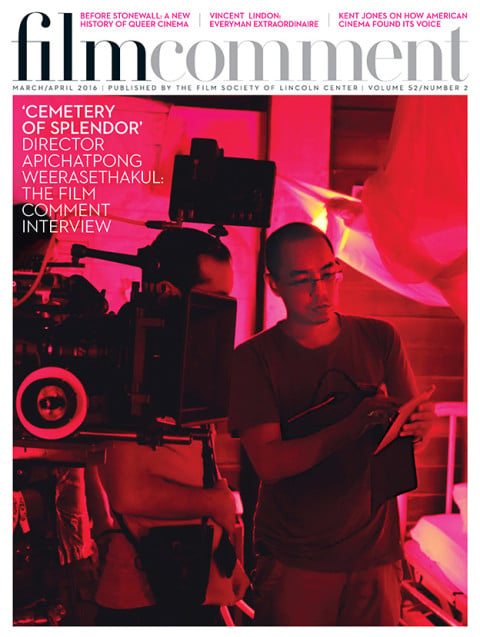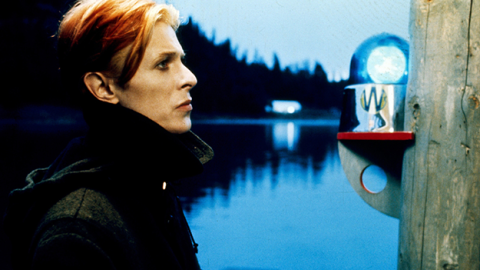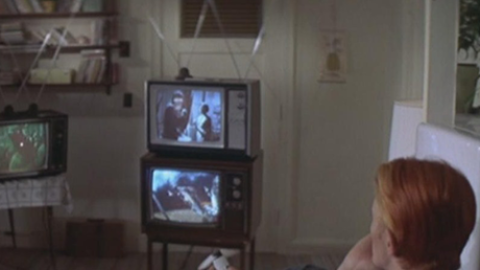By Nick Pinkerton in the March-April 2016 Issue

Changeling
Traversing time and space in David Bowie’s music videos
The astral sunset of orange hair, the mismatched pupils staring out from pools of azure eye shadow, the parted coral lips, all standing out against a skin tone a shade whiter than the all-white background. If you had to find a single document to encapsulate the audiovisual phenomenon of David Bowie, you could do worse than the film clip for “Life on Mars?,” the roving, exploratory camera handled by Bowie’s official court photographer, Mick Rock.

From the March-April 2016 Issue
Also in this issue
Bowie’s work in the music-video format spanned through the end of the Scopitone, the birth of MTV, the Vevo afterlife, and into his own postmortem. His first crack at it, if we don’t count hawking popsicles in a 1967 TV commercial directed by Ridley Scott, was a lo-fi sci-fi “Space Oddity” clip shot at the behest of manager Kenneth Pitt as part of a promotional film. Once his fame had been well-secured in the ’70s, Bowie’s video spots generally followed the “Life on Mars?” model, posing him against a monotone background, close-ups pulled back only to catch some key aspect of stagecraft, what the French call jeu de scène. In “Heroes,” Bowie first appears as a backlit silhouette, very Close Encounters of the Third Kind—or Pazuzu in The Exorcist. The video for Low single “Be My Wife” features a pallid and morose-looking Bowie, with ill expression and pastel 1920s togs purportedly inspired by Buster Keaton.
A keen film fan, Bowie was a magpie who borrowed promiscuously—he opened shows on his 1976 Isolar tour by screening Luis Buñuel’s Un Chien Andalou, and cited Fritz Lang and G.W. Pabst as inspirations for his stage lighting. The clips made for the 1979 Lodger album show new ambition for the music video medium. In David Mallet’s “Boys Keep Swinging,” “frontman” Bowie is backed by a trio of Bowies in drag, each with a distinct persona, who in a final reveal shed their wigs and smear off their lipstick. It’s a glam throwback, and certainly his most overtly queer video since “John, I’m Only Dancing,” with Lindsay Kemp’s mime troupe dancers.
The Mallet-directed “Look Back in Anger” has Bowie as an inverse Dorian Gray in his artist’s garret, riddled with a blighting pox while his portrait stays young. This led up to the watershed of 1980’s Scary Monsters (And Super Creeps), with the videos for “Fashion” and “Ashes to Ashes.” The latter, reckoned the most expensive ever made when it premiered, is a £250,000 comedown epic, featuring soon-to-be ubiquitous solarized video effects and Bowie curled up in a German Expressionist rubber room or in his sack-pantalooned Pierrot costume of the era.
Though Bowie was an early adopter of the promo clip, his videos become less distinct with the establishment of the music-video industrial complex and the professionalization of the form. The 1983 clips for “Let’s Dance” and “China Girl”—the first following an aboriginal couple in New South Wales, Australia, as they’re confronted with the appurtenances of modern capitalism, the second featuring Bowie and girlfriend Geeling Ching engaging in pre-P.C. raceplay—are well-intentioned vehicles for social commentary. Of the 1985 Mick Jagger collaboration “Dancing in the Street,” all that should be noted is that song and video were both recorded in a single 18-hour burst of, er, enthusiasm.
In the Internet past-life of the music video, however, Bowie returned with the more individual efforts that accompanied 2013’s The Next Day: Floria Sigismondi’s “The Stars (Are Out Tonight),” featuring Bowie and Tilda Swinton in middle-aged square dress-up as a couple menaced and manipulated like marionettes by celebrity phantasms—including Iselin Steiro as a young Bowie—and “The Next Day,” an anti-clerical debauch recalling Sigismondi’s work with Marilyn Manson. Bowie’s final collaborations with Johan Renck are doleful, undoubtedly personal affairs: the tremulous sickroom ballet of “Lazarus” and the 10-minute “Blackstar,” which begins with the removal of a jewel-encrusted skull from the husk of an abandoned astronaut’s suit, a darkly glittering memento mori of Major Tom.
Nick Pinkerton is a regular contributor to FILM COMMENT and member of the New York Film Critics Circle.





